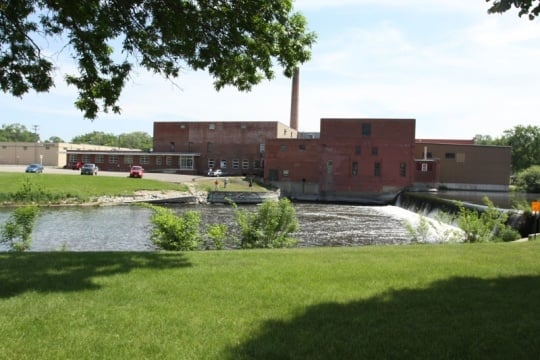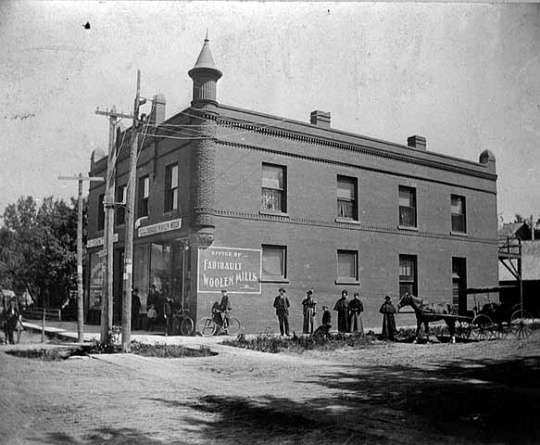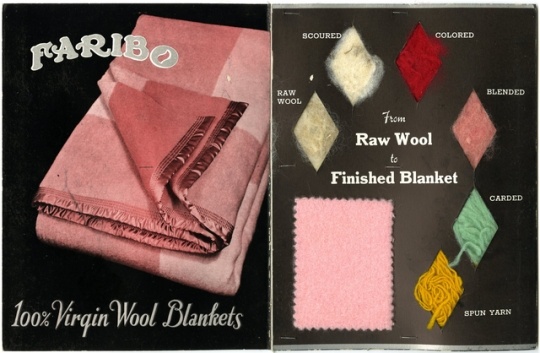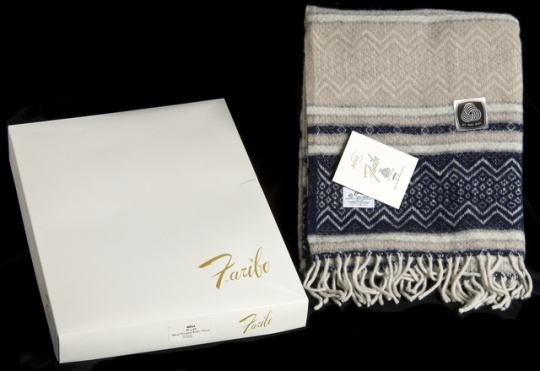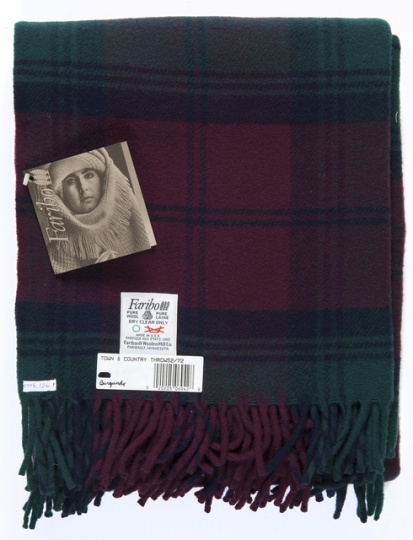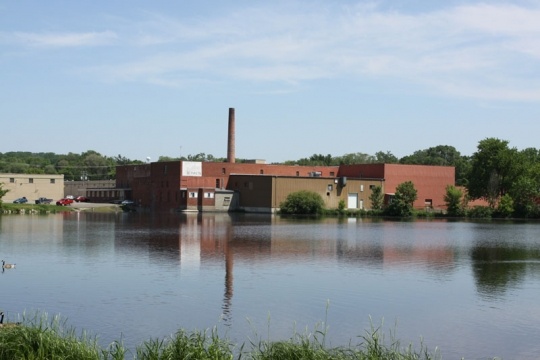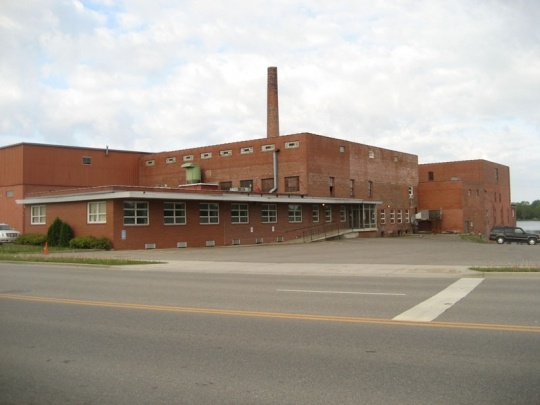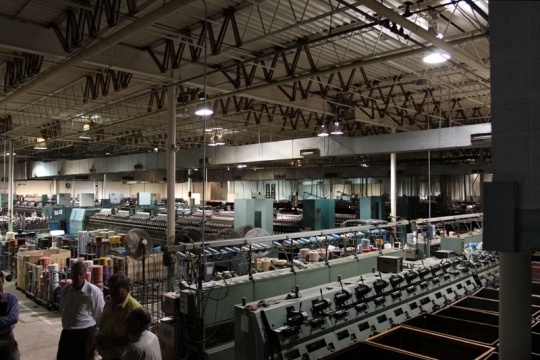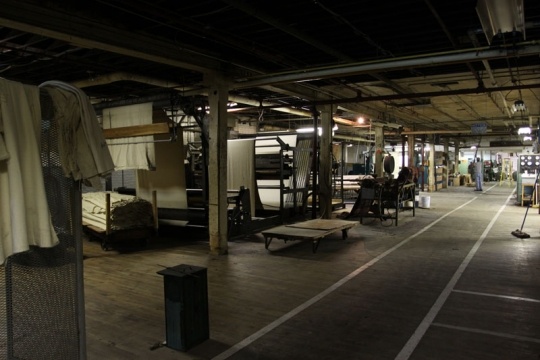Primary
Barnard, Newell H. "2-Million-Dollar Concern Founded in 1865-Faribault Blanket Makers Have Thriving Business." Saint Paul Pioneer Press, October 17, 1948.
Faribault Woolen Mill Company Collection
Manuscript Collection, Faribault Woolen Mill Company, Faribault, Minnesota
SMHC 124
Faribault Woolen Mill Company Papers, 1867–1967
http://lib.mnsu.edu/archives/fa/smhc/smhc124.html
Manuscript Collection, Southern Minnesota Historical Center, Minnesota State University, Mankato, Minnesota.
Description: Company records detailing employment, production, and finance.
Farnsworth, Clyde H. "Controlling Imports of Textiles." New York Times, February 13, 1979.
Fenton, John H. "Textile Industry Warned by Leader." New York Times, November 16, 1952.
Feyder, Susan. "Weaving a New Business Plan." Minneapolis Star Tribune, July 25, 2011.
Hobart, Randall. "105 Years on Banks of Cannon River, Faribo Woolen Mill Expanding Its Plant." Minneapolis Star, July 16, 1970.
Ingham, Harvey. "Firm Plans to Quit City." Minneapolis Tribune, April, 27, 1949.
"Minneapolis: The Head of Mississippi Navigation and the Manufacturing and Railroad Centre of the North West." Minneapolis Tribune, January 7, 1868.
Olson, Walter. Letter to F. W. McKellip. November 23, 1944.
Available in the file for Faribault Woolen Mill Dam at the Minnesota Department of Natural Resources, Saint Paul.
"Over $80,000,000: The Great Record of Minneapolis Manufactures for the Year." Minneapolis Tribune, January 1, 1889.
Sanborn Map Company. Insurance Maps of Faribault, Rice County, Minnesota. New York: Sanborn Map Company, 1905.
———. Insurance Maps of Faribault, Rice County, Minnesota. New York: Sanborn Map Company, 1909.
———. Insurance Maps of Faribault, Rice County, Minnesota. New York: Sanborn Map Company, 1914.
———. Insurance Maps of Faribault, Minnesota. New York: Sanborn Map Company, 1921.
———. Insurance Maps of Faribault, Minnesota. New York: Sanborn Map Company, 1930, 1950.
Sanborn Map Publishing Company. Faribault, Rice County, Minnesota. New York: Sanborn Map Publishing Company, 1889.
Sanborn-Perris Map Company. Faribault, Rice County, Minnesota. New York: Sanborn-Perris Map Company, 1893.
———. Insurance Maps of Faribault, Rice County, Minnesota. New York: Sanborn-Perris Map Company, 1899.
Schreiber, Pauline. "City Receives Dam-Repair Grant." Faribault Daily News, December 10, 1987.
Secondary
Granger, Susan. "Faribault's Historic Contexts: Final Report of a Historic Preservation Planning Project." Faribault, MN: Faribault Heritage Preservation Commission, 1986.
Kane, Lucile M. The Falls of St. Anthony: The Waterfall that Built Minneapolis. Saint Paul: Minnesota Historical Society Press, 1987.
"Large Midwestern Woolen Mill Founded by German Cabinetmaker." America's Textile Reporter 75 (June 8, 1961): 47–48.
Parsons, L. E., and John K. Stearns. Textile Fibers. Scranton, OH: International Textbook Company, 1951.
Kudzia, Camille. "Minnesota Historic Properties Inventory Form - North Star Woolen Mill." October 1988.
Saint Anthony Falls files, Hess, Roise and Company, Minneapolis.











